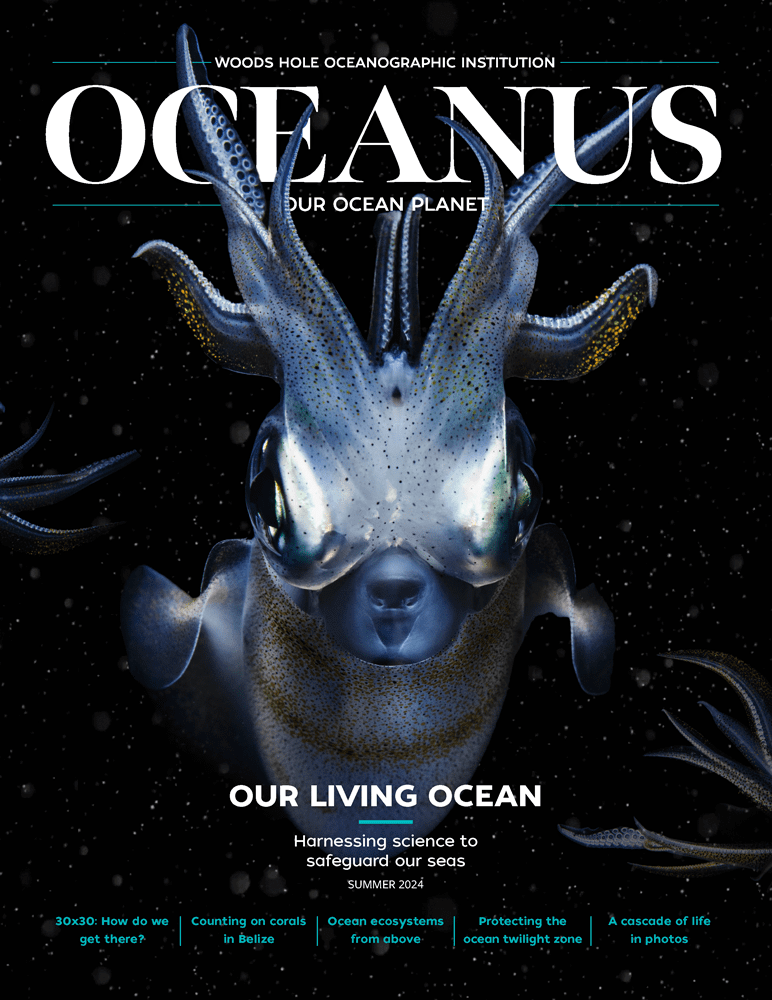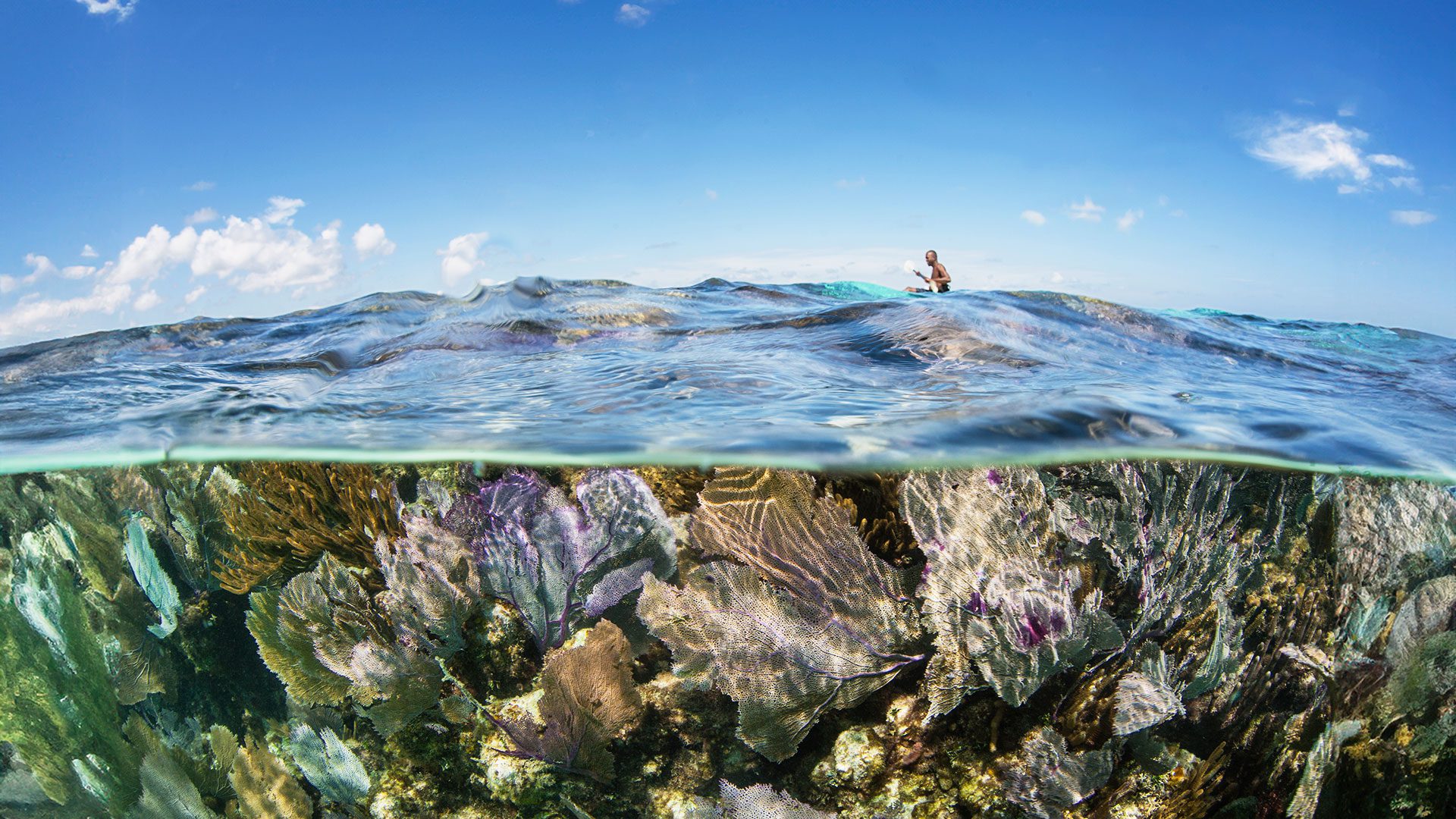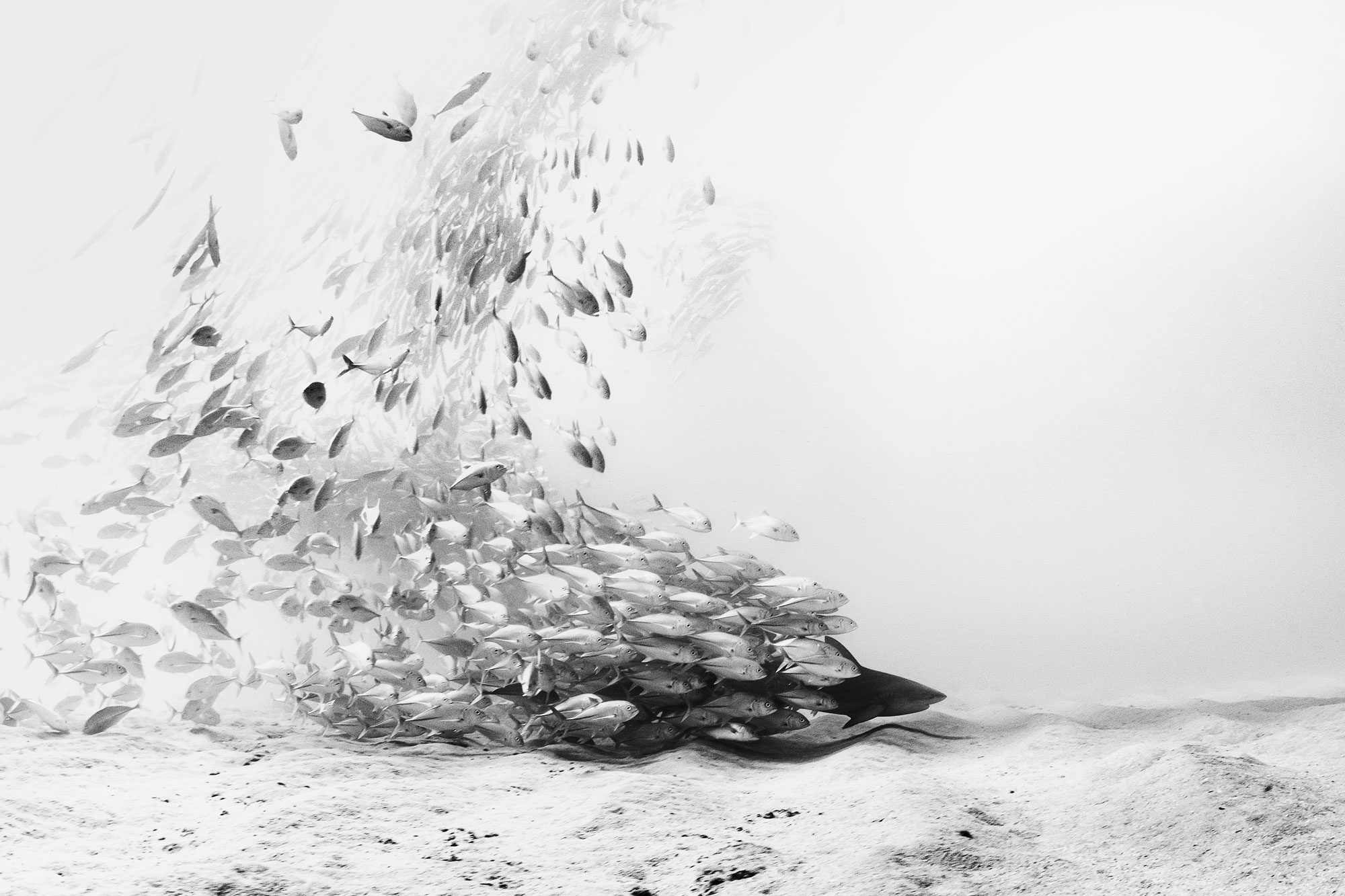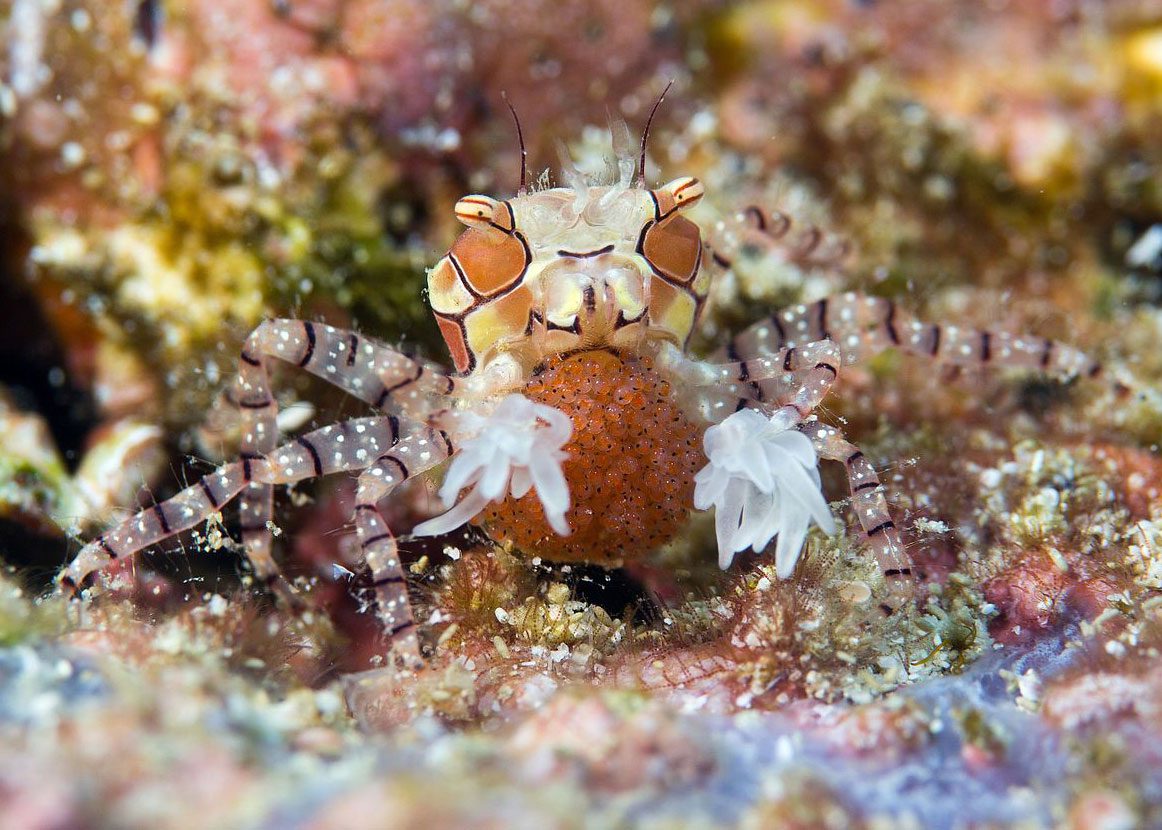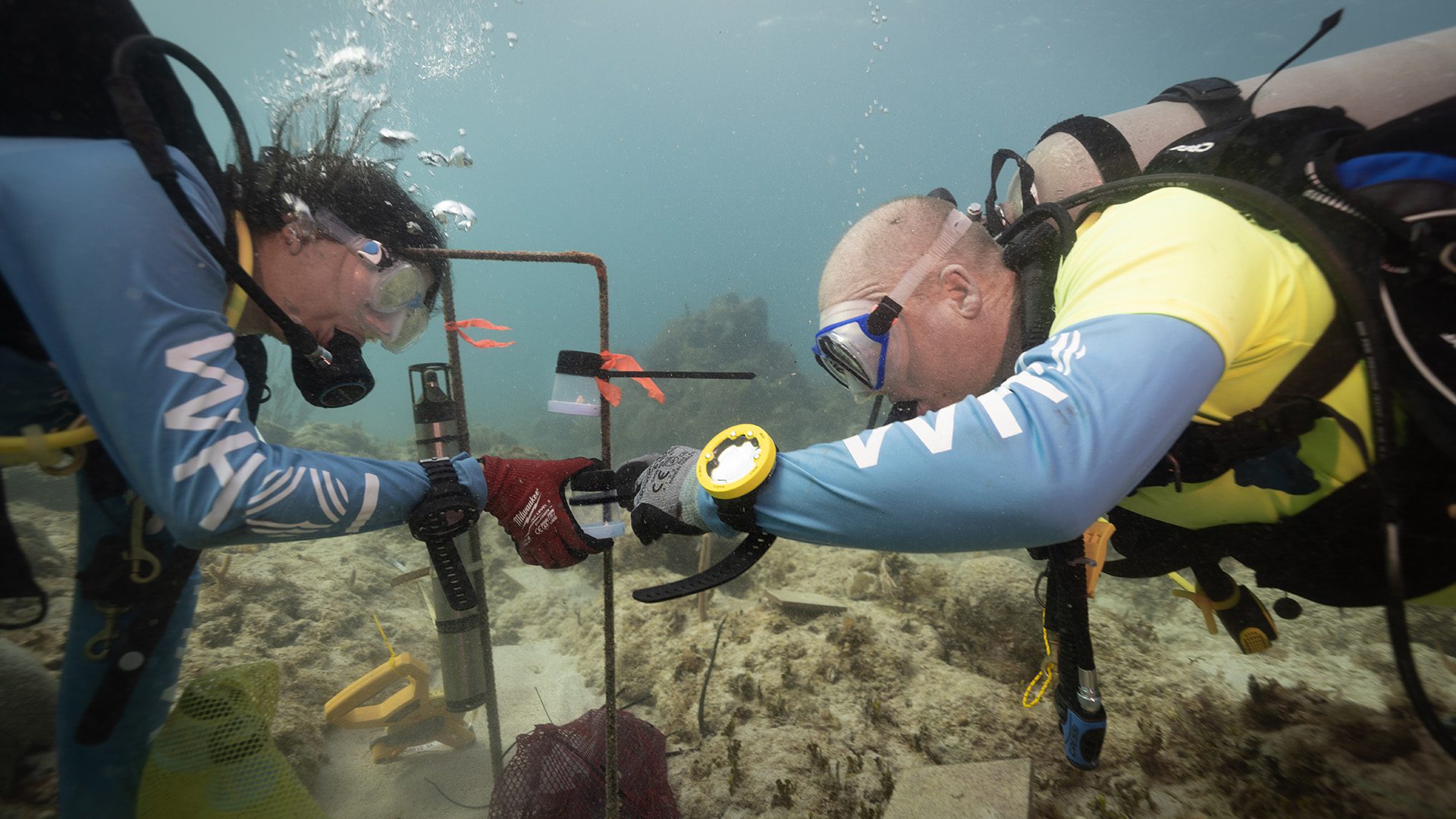
Estimated reading time: 4 minutes
Coral reefs are more than just a feast for the eyes, they are also awash in a stunning array of sounds. The chirps, grunts, and snaps of fish, shrimp, and other reef inhabitants are hallmarks of a healthy coral community rich in animals moving, feeding, calling out to potential mates, and fending off predators. To free-floating coral larvae—each no bigger than a grain of sand—this biological symphony serves as a siren’s song, drawing them to healthy reefs to settle, attach, and grow.
“For more than a decade, we've been listening to reefs in the U.S. Virgin Islands, and we've been using that sound to assess how healthy the reef is,” says WHOI acoustic biologist Aran Mooney. A healthy reef, Mooney says, has a lush, complex soundscape; a damaged one, on the other hand, sounds as degraded as it looks—and coral larvae drifting in the water above can hear the difference.
In earlier studies, Mooney found that larvae placed in acoustically transparent cups—but isolated from all other environmental cues—were much more likely to settle onto the reef and grow when the cups were placed on a vibrant, noisy reef than on a degraded one lacking a complex soundscape.
Although that seems like bad news for damaged reefs, coral larvae’s attraction to healthy reef sounds could in fact prove to be a powerful tool in reef restoration efforts.
“By recording the sounds of a healthy reef and playing them back to coral larvae, maybe we can get them to settle somewhere they normally wouldn’t—on a damaged reef in need of restoration,” Mooney says.
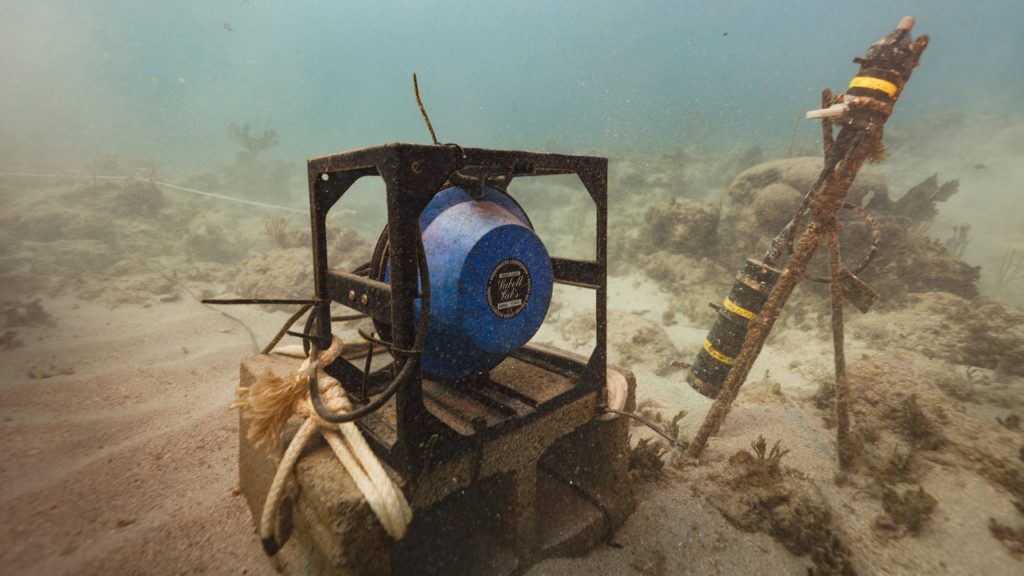
A speaker is installed on the seafloor to play the sounds of a healthy reef ecosystem in the hopes of encouraging coral larvae settlement. (Photo by Dan Mele, © Woods Hole Oceangoraphic Institution)
To test this theory, Mooney worked with WHOI engineer Ben Weiss and others to build an underwater “acoustic enhancement system.” The initial prototype consisted of a swimming pool speaker attached to a float, equipped with batteries powered by a solar panel, and a micro-SD chip of soundscape recordings—ones that would appeal to coral larvae, which respond to sound’s vibration, not the tones that humans hear.
Once the prototype was complete, it was time to get it in the water.
Early in the summer of 2022, Nadège Aoki, an MIT-WHOI Joint Program student in Mooney’s lab, flew with him and others on the WHOI Reef Solutions team to St. John in the U.S. Virgin Islands to lead a series of experiments timed with the new moon—the peak window for coral spawning. For her first experiment, Aoki used the mustard hill coral Porites astreoides.
She brought samples of the coral into the lab, allowed them to spawn in seawater tanks, then collected their larvae and put them into cups containing small, 3-D clay structures for them to settle on. She placed the cups out on three different reefs—two degraded, one healthy—at 1, 5, 10, and 30 meters from the speaker system. At one degraded reef, the system played a healthy soundscape. At the other, the negative control, the system was turned on, but played nothing. The healthy reef—the same one where the playback soundscape had been recorded—served as a positive control. Once the cups were in place, Aoki checked for coral settlement after 24, 48, and 72 hours.
The initial results were startling.
“At the acoustically enhanced site, we found much more settlement—2 to 3 times more—than without enhancement,” Aoki says. In other words, the soundscape playback had worked, inducing larvae to settle at rates higher than even those at the healthy reef. That encouraging pattern held for all time intervals tested, and as expected, the effect decreased with distance from the speaker system.
Aoki repeated a simplified version of the experiment with a second species, the golf ball coral Favia fragum, in seawater tanks and in the field. This too showed acoustic enrichment increased settlement rates, but only early-on, when the coral could afford to be picky about choosing a settlement site. A third experiment—using terracotta settlement tiles instead of larvae enclosed in cups—failed to show an effect.
Mooney says these studies clearly show that healthy reef sounds enhance settlement. Yet the last result, he cautions, highlights the critical need to carefully select restoration locations where, and times of year when, larvae are naturally abundant.
“These were important pilot studies. If we redo this experiment, we’ll go back in August and September and do it when there is more mass coral spawning and a lot more larvae in the water,” Mooney says.
Another important factor, he says, is to understand the path of currents carrying larvae to and from the reef. Mooney is working with WHOI coastal physical oceanographer Gordon Zhang to develop hydrodynamic models of currents on and around coral reefs to better inform acoustic intervention efforts.
The next step, Mooney says, will be for his team to work with organizations actively restoring reefs, such as The Nature Conservancy and local conservation groups, to test the soundscape approach with more coral species in more locations across the U.S. Virgin Islands, Hawaii, and beyond. The ultimate goal, he says, is to turn his one-off prototype into a low-cost, reproduceable acoustic system that non-experts can easily use and deploy on reefs around the globe.
“What makes acoustic enhancement really exciting is that it can work as a stand-alone intervention or as a tool to enhance existing restoration projects and approaches,” Mooney says. “I think we’ve come up with something that can make a real, measurable impact on bringing coral reefs back to health.”
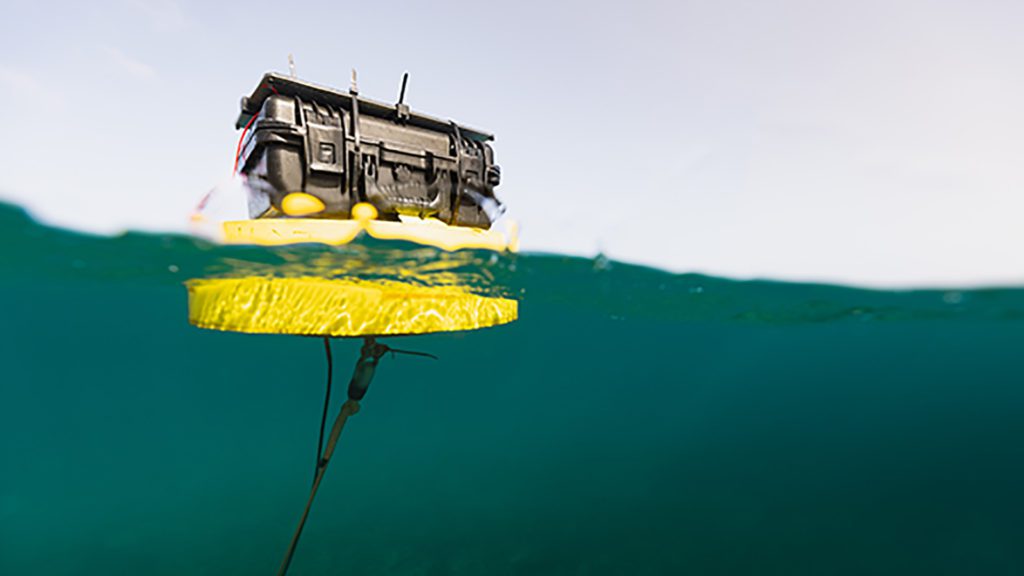
An acoustic electronics package floats on surface buoy above the reef. (Photo by Dan Mele, © Woods Hole Oceanographic Institution)
Funding for this research is supported by Oceankind and Vere Initiatives.
